
How to Create Job Ads that Attract Talent
Would a top candidate choose your posting over a competitor’s in under a minute? The answer depends on whether your job ad sells opportunity or just lists demands.

Today, writing a proper ATS resume is essential for landing a job. To put that in numbers, 99% of Fortune 500 companies use applicant tracking software (ATS) when reviewing candidates’ resumes.
An ATS might be why an applicant never gets contacted by a recruiter even if they have the relevant skills and experience for the job vacancy. In fact, research shows that the systems reject 75% of qualified candidates because they can’t read their resumes.
Therefore, learning the ATS’s preferences and adjusting the resume might be prudent. Since the ATS acts as a filter, applying with an optimized ATS resume increases the chances of reaching a recruiter.
ATS is software used by recruiters and hiring managers to manage candidates applying for open positions.
An ATS sorts the received resumes and turns them into a standard format. Then, it checks them against the job description to see which ones are the best match. For a hiring manager or recruiter, this automatically removes candidates who are not a good fit so they can spend time manually evaluating the proper candidates.
An applicant tracking system is an HR software that provides recruiting and hiring tools for companies. It collects and sorts thousands of resumes so recruiters can easily access and search through them.
There are several ways hiring managers can use an ATS for the recruitment process. Some recruiters choose to glance at every resume that comes through the system. The initial screening takes 7.4 seconds. Therefore, an applicant has a brief timeframe to make a good impression, and this is when a well-written ATS resume does the trick.
An ATS can also compare resumes to the job description. Then, each application is ranked based on how much it matches the description. This makes it easier for recruiters to browse the candidates who are the best fit. Some websites, such as Resumeworded and Jobscan, allow applicants to check how compatible their resume is with an ATS.
The most common way an ATS filters resumes is by searching for keywords. Hiring managers input the keywords in the system, and it browses for matches in the resume. Usually, most of the keywords can be found in the job description. ATS resume templates can also help candidates choose the best ones according to the job title.
An ATS’s purpose is to speed up and ease the process of sourcing candidates for companies. It provides numerous benefits, including:
Given the explosive software growth in recent years, writing a resume with ATS in mind is essential. An ATS, on average, rejects 75% of candidates immediately based on the potential fit criteria.
An ATS-friendly resume is optimized to pass all the system’s settings. It has the elements and structure that translate well into the programming. The safe bet is to create a well-formatted and easy-to-read CV.
It should be effortless for the software and a human to understand.
What is the process for setting up a job in an ATS?
Writing an ATS-friendly resume dramatically increases the chances of getting to the initial interview. There are specific tips and tricks to writing an ATS resume that will beat the system and land a candidate their dream job.
At its core, ATS software’s primary task is to scan the document and look for relevant information to determine whether they match the job description.
Therefore, optimizing a resume for keywords is essential to ensure it doesn’t go unnoticed. Keywords represent the soft and hard skills and the experience a candidate has that are necessary to qualify for the job opportunity. So, when writing an ATS resume, it is vital to include the relevant words and make them easy to find.
The hiring manager decides what keywords to include in the system. Depending on the job position, those might be skills, experience, or qualifications. Hence, the applicant must figure out which are the relevant keywords.
The easiest way to do that is to look at the job description. As a general rule of thumb, putting three to five keywords from the posting increases the chances of beating the system.
But what is also important is where and how often the keywords appear. Some ATSs determine the strengths of the skill depending on how many times the term shows up, whereas others connect the skill with the amount of experience depending on the keyword’s placement. Thus, it is crucial to optimize a resume according to both ways of ATS scanning.
Another vital thing about keywords is to use both their long and short forms. For example, if applying for a job that requires knowledge of ‘Search Engine Optimization,’ it is also safe to include ‘SEO’ in the resume.
Even though they look pleasant to the human eye, an ATS cannot recognize and adequately scan images and charts, resulting in an incomplete resume. Research showed that 21% of applicants use images or charts unreadable to the ATS, so it’s best to avoid them altogether.
The same research also noticed that for 25% of resumes, the contact information was ‘unidentifiable’ by an ATS because it was put in the header or footer. Therefore, it is best to avoid placing important contact details in those document sections.
Most ATSs read the same way people do, i.e., from left to right. So, no matter how neat it looks to insert tables and columns in a resume, they have no place in an ATS resume.
An ATS is customized for each job position individually. In the same way, you will need to update your resume for every different job application.
This doesn’t mean starting from scratch each time you apply for a job; the original CV you set up should be mostly usable. You only need to tuck in a few words here and there to make sure they match the job description.
An ATS uses optical character recognition. That means that the ATS scans the document looking for characters, letters, and numbers that it recognizes.
While an ATS is brilliant enough to scan PDF or Word documents, it is not sophisticated enough to recognize unusual characters. An uncommon font that strays too far from your classic Serif or Sans Serif font families could jeopardize your chances. To be safe, use Times New Roman or Ariel.
Since charts and tables are out of the question, a great way to tidy a resume is to use bullet points. They are a great way to highlight essential skills and experiences and don’t interfere with an ATS’s practice of scanning a resume.
However, it is best to deflect from using complex characters when creating a bullet list to be on the safe side. Instead, stick to simple options, such as a solid circle, open circle, or square. That way, the resume will look much neater and still be compatible with an ATS.
For a resume to be ATS-friendly, there is a simple rule: less is more. Complex designs confuse ATSs, but they might also annoy recruiters who want to scan a resume.
Therefore, instead of fancy formatting, make the resume simple. Put the information where it usually stands, and don’t add unnecessary details. Decide what type of hierarchy it will follow and be consistent throughout.
Organize the resume with labeled and clear sections. This is a great way to make it easier for an ATS to know where to look for keywords. Also, it gives the recruiter better optics. Consider bolding the headings, writing in caps lock, and sticking to the familiar labeled sections.
Since an ATS uses optical character recognition, which means it scans the document looking for characters, letters, and numbers that it recognizes, the font used plays a crucial role.
Once the resume is complete, the next step is to save it in the appropriate file formats. Usually, the job descriptions state which are the accepted formats. If they aren’t there, or the choice is between PDF and .docx, always go with .docx. A .docx file is the most compatible format with ATSs.
After the resume uploads on the company site, the ATS searches it for the correct keywords. Now, if it does not find the right ones, your resume will be removed from the pool, and a recruiter will never evaluate it – even if you were the perfect candidate.
The only CVs that get reviewed by a human are those that contain the right keywords.
The main keywords describe your:
There are two ways that an ATS determines the strength of a skill:
Important keywords should appear two or three times. A strong resume should incorporate a section for essential skills or core competencies. Also, drizzle those keywords in the work experience and education sections, where appropriate.
Pro Tip: If you mention a skill within the description of a specific job you held, it is assigned for the same years of experience you held that job within the ATS. Listing the experience only in the skill section does not tell the ATS how long you’ve used it.
That is why it is crucial to incorporate your skills throughout the entire resume.
Like with nearly every system in the world, people will try to get around the rules and attempt to cheat an ATS.
Candidates try to circumvent the software by adding the target keywords to their resumes with white lettering – making them invisible to the naked eye. Or sometimes, they copy the job description from the resume and paste it with white letters.
However, an ATS unveils these attempts since it gives the recruiter all the lettering in black. This shows the recruiter that the candidate is ready to cheat to get ahead. The chances are that the recruiter will disqualify this candidate’s resume. Thus, it is far better to work with an ATS than try to cheat the system.
Instead of trying to deceive an ATS, follow some practices to increase the chances of passing the system’s requirements.
When you are tailoring your resume, it is essential to pay attention to some things.
Always emphasize the accomplishments and job descriptions relevant to the job position. Build up the resume in places that are most relevant to the job you are applying to and the direction you want your career to go.
Minimize the descriptions or even exclude some jobs that you held if they are not relevant.
In the beginning, have a section “Summary.” Here you can integrate highlights that are important for this job. This will show the recruiter that you tailored the resume for this specific position and company. It also gives you one more place to put the most important keywords.
There are many ways to layout a resume. Following these tips will help you make it ATS-friendly:
The easiest way for a candidate to not get rejected by an ATS is to apply for jobs that match their qualifications. If the job requirements correspond with an applicant’s work history, education, and skills, the experience will naturally appeal to the ATS.
An ATS allows recruiters to see a candidate’s history of applications and the currently active applications at the company. It is okay to apply to a few positions if they are similar. But applying to too many different jobs will make it look as if the applicant is unserious about the process of looking for a job or as if they are not sure about what they want to do in life.
Because every job position has specific keywords set in the ATS, editing each resume to include them is imperative. In addition, a higher keyword match results in better chances of a resume reaching a recruiter. Tailoring a resume for every job is vital because hiring managers can notice when the resume is a generic one meant for all job applications.
You need to divide and label the sections to make it easier for an ATS to know where to look. Also, it gives the recruiter better optics. Consider bold headings, written in caps lock, and always stick to the familiar labeled sections.
Some templates have a summary headline/target role section. It tells the recruiter what the candidate brings to the table for the specific job position. So, if you are going with such a template, make sure your summary is well-written in terms of both word choice and writing tone. If it’s not, run it through the AI paraphraser to make it fluent yet professional.
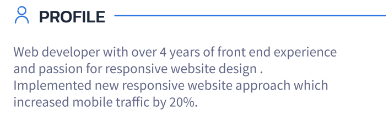
This section must contain a phone number, email address, name and surname. Make sure that your details are current.
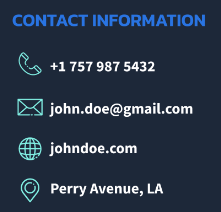
If you are new to the workforce, you can use your full education. If you have more than five years of work experience, any education before college is not necessary. A new college graduate may place their education near the top of the resume. If you have years of work experience, your education matters less and should be at the bottom.
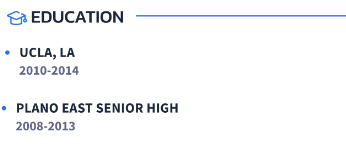
Use a separate section for the accomplishments, and make sure you incorporate them in the job description.
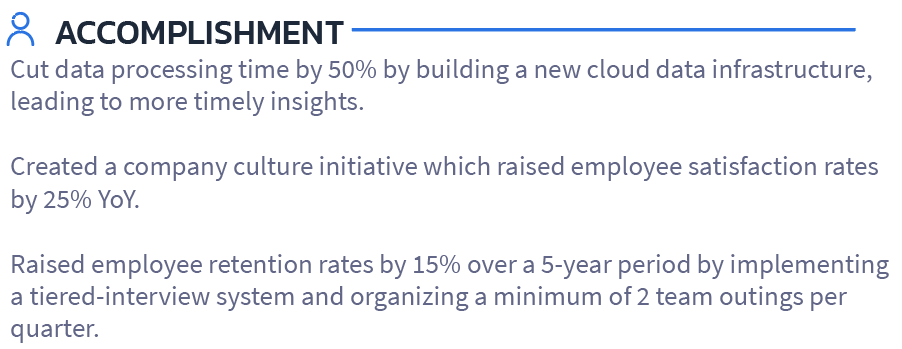
Keep your writing short and use bullets for every description.
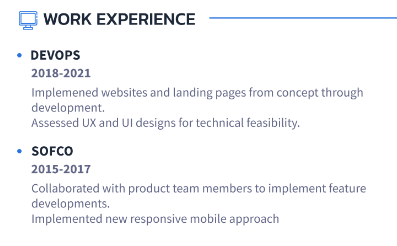
These need to match the skills in the job description.
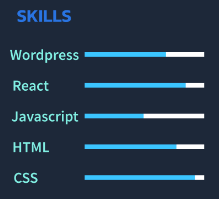
In this area, you can mention relevant certificates for the position. Dazzle the recruiter (and the ATS) with your credentials and upstart spirit.
Of course, if you think that it is necessary to mention a different section, by all means, add it. But it is always best to keep it simple.

You can create a resume from scratch in a Word document or other platform, but that may not be necessary. There are ATS-friendly templates that you can use. You can create a resume from scratch in a Word document or other graphic design platform, but that may not be necessary. There are ATS-friendly templates that you can use. These websites can help you build an ATS-friendly resume:
Resume example
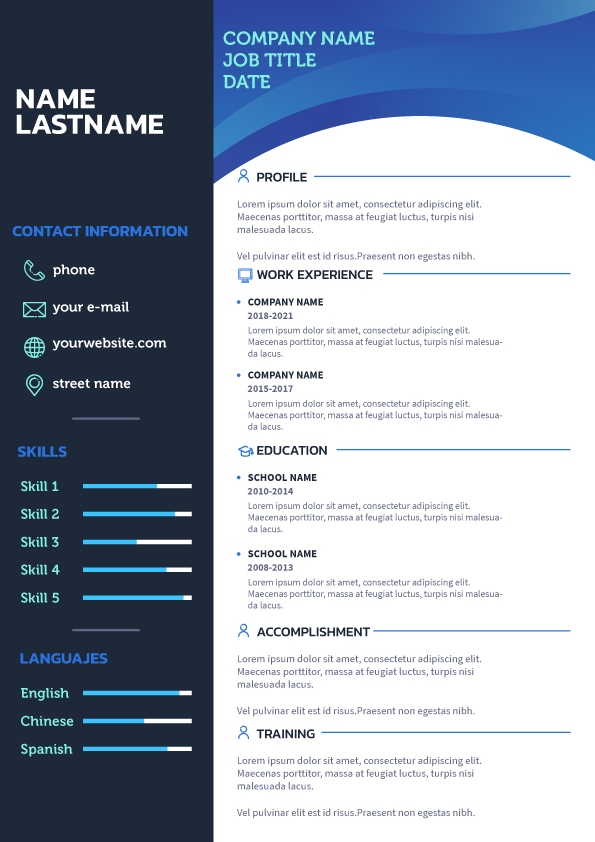
Writing a compatible ATS resume might be difficult, but it is not impossible. If the focus is on trying to create an ATS-friendly resume instead of cheating the system, the chances are it will make it through the software and get into human hands.
Following the tips and tricks mentioned above boosts the chances of creating an excellent ATS resume. And, if the resume manages to impress the ATS, chances are it will impress the recruiters too.
Browse our curated list of vendors to find the best solution for your needs.
Subscribe to our newsletter for the latest trends, expert tips, and workplace insights!

Would a top candidate choose your posting over a competitor’s in under a minute? The answer depends on whether your job ad sells opportunity or just lists demands.

As top talent is becoming more scarce, is hiring from within becoming a critical business objective for growth?

Or how implementing a timeless tactic in the modern workplace can lead to hiring high-quality, engaged, and loyal employees.

How easy it is to offboard a remote employee? In fact, it might be more complicated. Having an offboarding checklist can help make sure you don’t miss anything.
Used by most of the top employee benefits consultants in the US, Shortlister is where you can find, research and select HR and benefits vendors for your clients.
Shortlister helps you reach your ideal prospects. Claim your free account to control your message and receive employer, consultant and health plan leads.